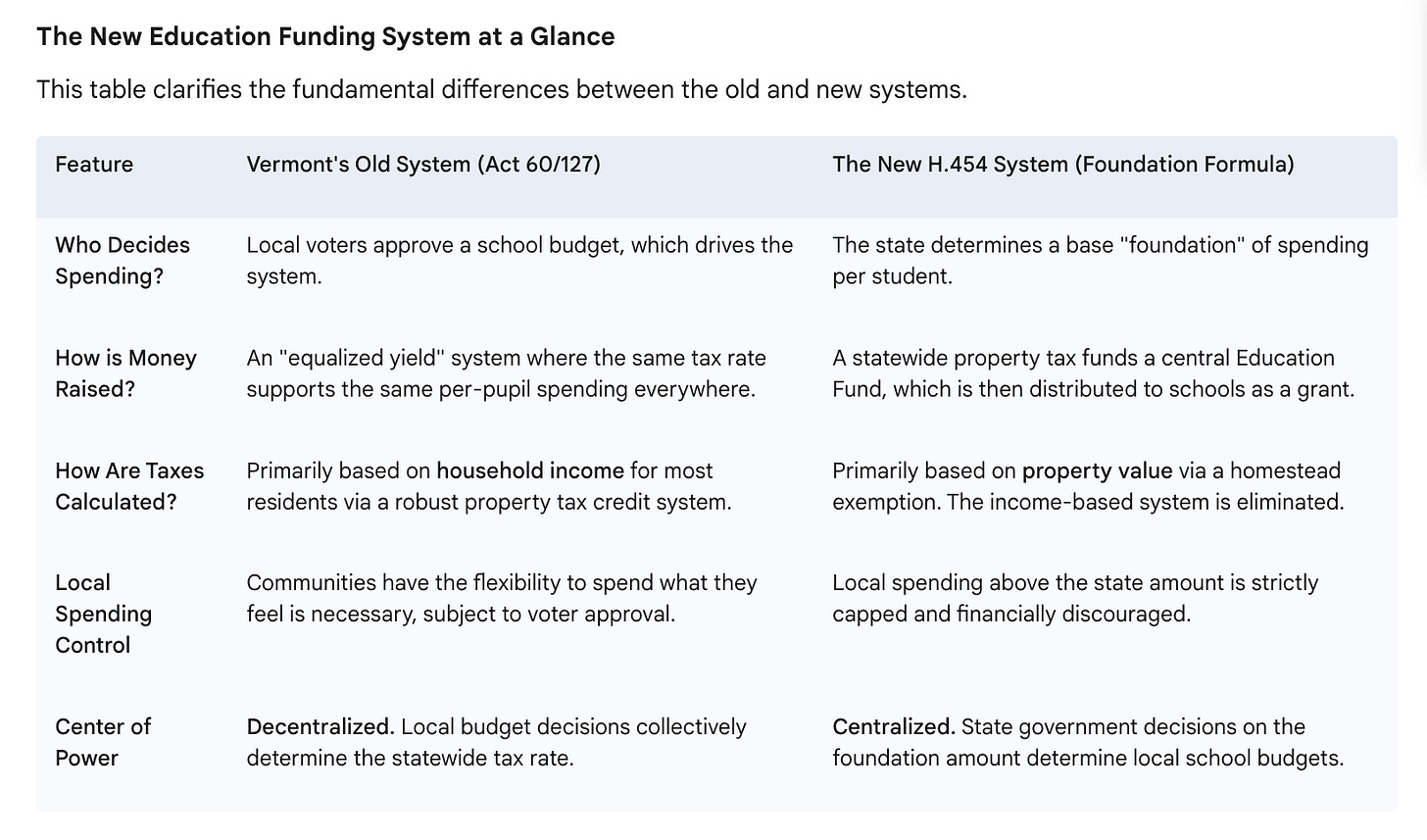Here’s an Impartial Guide to Understanding Vermont's Landmark Education Reform Bill So You Can Form Your Own Opinion
Key points of the reform bill are in bold for a quick review. The bill still requires a majority vote in both the House and Senate.
After a tense and complex legislative session, the Vermont General Assembly has finalized H.454, a sweeping bill that fundamentally transforms the state’s education system. Forged in a high-stakes Committee of Conference, this final version now goes to Governor Phil Scott. Given the Governor's consistent push for structural education reform, he is widely expected to sign the bill into law, ushering in a new era for Vermont’s schools, communities, and taxpayers.
The legislation is built on three pillars of reform: a complete overhaul of school governance through district consolidation, a radical shift in education finance away from the state's iconic income-based system, and new state-level initiatives to improve educational quality. Here is a breakdown of what these profound changes entail.
A New Map for Governance: The End of the Local School District
The most visible change H.454 will bring is the redrawing of the state's educational map. The bill aims to replace Vermont’s 119 local school districts with a smaller number of larger, regional entities. This process will be driven by a state-appointed body, representing a major shift of power from local communities to Montpelier.
The Redistricting Task Force: The bill creates a School District Redistricting Task Force, composed of state officials and legislative appointees. This task force, not local voters, is charged with designing a new map of school district boundaries.
The Mandate: By November 2025, the task force must propose new district maps with the goal of equalizing student populations and tax base values. The target for implementing these new, larger districts is July 1, 2029.
The Loss of Local Control: This centralization of power is a core feature of the reform. The authority to determine the size, shape, and composition of school districts—a decision historically made at the local level—will now reside with the state. This effectively transforms the role of local school boards, reducing their authority from policy-making and budget-setting bodies to administrative units managing a state-determined budget within a state-drawn district.
A Revolution in School Funding: The Foundation Formula
H.454 completely dismantles the state's nationally recognized but often controversial funding system, which has been in place since the 1997 Brigham court decision. In its place, the bill erects a new financial architecture controlled at the state level.
From Local Budgets to a State Grant: The bill replaces the current system, where local school budgets determine the statewide tax rate, with a foundation formula. Under the new model, the state will determine a base per-pupil funding amount (the "foundation") that it deems adequate for a student's education. This amount, set at $15,033 in the House-passed version, will be distributed to districts as a grant.
An End to Income-Based Taxes: A cornerstone of the reform is the repeal of Vermont's income-based property tax credit. For decades, this system has ensured that for a majority of homeowners, school tax liability was based on household income, not property value. The new bill eliminates this system.
The New Homestead Exemption: In place of the income-based credit, the bill establishes a homestead exemption. This mechanism reduces a home's assessed value before the property tax is calculated. The result is a fundamental shift: education taxes will now be based primarily on property wealth, not a household's ability to pay.
Capping Local Spending: The bill strictly limits the ability of communities to spend more on their schools than the state-provided foundation amount. Any "supplemental spending" is subject to a hard cap and will be funded by a local tax rate so punitive it will be prohibitively expensive for all but the wealthiest towns.
Legislating Quality: State-Level Standards
Finally, the bill implements several measures aimed at standardizing and improving the quality of education across the state.
School Construction: Recognizing that many school buildings are aging, H.454 creates a new State Aid for School Construction Advisory Board and a dedicated fund to help plan and co-finance major infrastructure projects in a more equitable and systematic way.
Special Education: The bill directs the Agency of Education to develop a statewide three-year strategic plan for special education. This aims to bring more stability, predictability, and equity to the funding and delivery of these critical services, which have been a major cost driver for local districts.
Town Tuitioning: The bill places significant new restrictions on which independent schools are eligible to receive public tuition dollars, an attempt to ensure greater accountability for how public funds are spent. This remains a highly contentious issue likely to face legal challenges.
In essence, the bill is a comprehensive restructuring of how public education is governed, funded, and standardized in Vermont. It seeks to achieve greater equity and cost stability by consolidating the state's 119 school districts into a smaller number of larger, regional entities; replacing the state's unique, income-sensitive funding formula with a centralized, state-controlled foundation formula; and implementing new statewide programs for school construction and special education. This represents a historic shift of power from local communities to the state, with profound implications for every stakeholder in the system.



